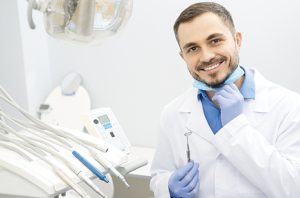Being nervous or afraid to visit the dentist is very common – in fact, it’s so common there’s a name for it: dentophobia. This type ofphobia can range from mild to severe and cause shortness of breath, elevated heart rate and blood pressure, and other signs of anxiety, such as shaking or a sense of impending doom.
With reactions like these, it’s little wonder that many patients avoid going to the dentist and postpone much-needed dental care. However, you can increase patient compliance and reduce attrition by establishing a reputation as a dentist skilled at relieving anxiety and calming dental fears. Set yourself apart in your field by adopting operating procedures and investing in tools to ease dental phobia.
What is dental phobia?
Dental phobia goes beyond nervousness when sitting in the dentist’s chair. It’s a complex combination of fears, anxieties, and physical and mental symptoms that cause patients to avoid routine checkups and postpone dental care — leading to more severe dental problems and more extensive treatment.
About 22% of the population have admitted to avoiding the dentist due to fear. Some of the significant reasons people fear the dentist include the following:
– Anticipating pain
– Feeling embarrassed or self-conscious about the state of their oral health
– Fearing a loss of control
To treat fearful patients, dentists must understand these fears and use different techniques to address them.
What is needle phobia?
Needle phobia, trypanophobia, is more than just a fear of needles. A person with trypanophobia may dread receiving any medical care — particularly anything that involves injections. Before any medical procedure, patients can experience high blood pressure and an elevated heart rate which can occur hours or even days before the appointment.
Blood pressure may rapidly drop during the event, causing the patient to faint. Some patients with needle phobia may have a hypersensitivity to the pain caused by a needle; an injection barely felt by one person may cause excruciating pain to another.
What causes dental phobia?
Phobias about dentists and dental procedures can stem from many causes but most commonly arise from a prior dental experience that was painful or frightening. If someone was frightened by the dentist as a child, these fears could develop into something deep-seated and persistent in adulthood. Other cases of dental phobia may stem from generalized anxiety or fear of going to the doctor. In these cases, a patient may benefit from treatment from a therapist or other non-dental professional to address the root of the problem.
Techniques to soothe nervous patients
As a dentist, you can take many approaches to help patients relax and feel less nervous during procedures or checkups and cleanings. Many of these techniques are aimed at helping patients feel more in control of their feelings and fears. The more these techniques you can incorporate into your standard operating procedures, the more successful your practice will be at building patient trust and increasing compliance.
Communication and Control
Clear and consistent patient communication is critical. Simply taking a few minutes of the appointment for a quick conversation — whether about their work, hobbies, family, or specific dental fears — can help patients settle in and relax.
Many people may feel better after talking to the dentist about their fears. Avoiding pain is a powerful motivator, and you can help alleviate your patients’ fears by giving them a greater understanding of the procedure and the potential for any discomfort. Dental technology has significantly evolved over the last few decades, and patients may not be aware of newer technologies that can make procedures more comfortable.
Some patients may also appreciate a step-by-step explanation during their dental procedure. Anticipating pain can add to the stress they experience, but by letting them know when you begin each step, you can help relieve some of the fear of the unexpected. Utilizing advanced technology such as digital tomography with computer monitors in the patient rooms is an excellent way to explain problems and treatment options thoroughly.
Control is essential to easing dental phobia, even if it’s just as simple as telling your patient, “We won’t start each step until you say okay.” Allow them to feel like they have a say in what’s happening and can self-soothe in between each step. You may also want to establish a hand signal that they can use to indicate if they are uncomfortable or need a break.
Comfortable setting
Take a look around your dental office. Is it a comfortable, calming environment? Or is it impersonal and sterile? Make an effort to create an environment where you and your patients enjoy spending time. Hire a professional interior designer to create a relaxing, inviting space if necessary. Touches such as calming artwork, soft blankets, soothing music, and live plants can have a relaxing effect on many individuals. You can also try distraction techniques like hanging TVs in exam rooms. Allowing patients to choose the program will help give them an additional sense of control.
Sedation dentistry and nitrous oxide
Some patients may need additional measures, including medically induced calming techniques like sedation dentistry. For very fearful patients, please give them the option of mild sedation or nitrous oxide during their procedure. Not only will this make their procedure more comfortable, but it may also help them overcome their dental phobia by preventing the formation of any new unpleasant memories that could contribute to the fear.
While many dental practices have traditionally reserved anesthesia for more complicated procedures such as tooth extractions and root canals, it’s becoming more common to offer light sedation for more routine procedures, even a cavity filling. Your practice set-up may vary, but if you have many patients with dental phobia, consider expanding your options for sedation dentistry.
Beneficial vibration
The DentalVibe® Comfort Injection System is designed to help ease dental phobia and fears. The device uses a gentle vibration to help block pain signals from the brain. Using the DentalVibe®, the dentist applies a light pulse near the anesthesia injection site. When injection and vibration sensations coincide, the brain processes the vibration signal first, essentially blocking the feeling of the injection. Many patients who fear dental needles have stated that they didn’t even feel the injection and that the DentalVibe® made their dental experience much more pleasant.
Learn more about the effects of dental vibration.
Vibration technology is a science-based, reliable method of eliminating pain from dental injections. Learn more about the science behind DentalVibe® by downloading our free e-book, The Benefits Of Vibration On Dental Pain And Anxiety. Incorporating pain-free injections into your dental practice will ensure that your patients have a more relaxing experience every time they visit your office.

















